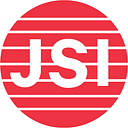In the wake of the COVID-19 pandemic, many countries have grappled with the dual challenge of maintaining their health systems while also scaling up an unprecedented vaccination recovery response. Immunization coverage dropped significantly in 2020 and 2021, with an average five-point reduction, particularly in low- and middle-income countries. As the pandemic emergency subsides, global public health leaders have made a call to action to return to pre-COVID-19 numbers to achieve immunization goals and priorities in the years ahead. With this renewed focus on strengthening immunization programs, cervical cancer elimination strategies and the human papillomavirus (HPV) vaccine have gained global attention with several opportunities for progress. November 17, the International Day of Cervical Cancer Elimination Action, marks three years since the movement to eliminate cervical cancer began when 194 countries resolved to eliminate cancer for the first time.
The HPV vaccine, which prevents 17.4 deaths per 1,000 vaccinated individuals, stands out for its remarkable efficacy. The potential for big impact means the global community is striving for big numbers and ambitious goals. The Cervical Cancer Elimination Agenda aims to fully vaccinate 90 percent of girls by the age of 15 by 2030. In December 2022, WHO updated its policy recommendation, adding a single-dose schedule for the HPV vaccine, enabling more efficient service delivery. Also in 2022, Gavi launched its HPV Vaccine Revitalization Strategy, committing $600 million toward a goal of vaccinating 86 million girls by 2025.
Two key areas of opportunity make HPV vaccination pivotal right now: strengthening gender and adolescent health and considering a single-dose schedule. HPV vaccination is an additional opportunity for health care providers to interact with adolescent girls and increase their access to nutrition, sexual and reproductive and mental health services, and social services that have largely missed this vital population in the past. This integration of services also has the potential to promote positive gender norms and improve health outcomes.
The HPV vaccine may soon be even more affordable, as evidence suggests that both a single- and a two-dose schedule demonstrate comparable efficacy and duration of protection among the primary population (girls 9–14 years).[1] Opting for a single-dose schedule may offer programmatic and financial advantages.[2] Gavi is supporting countries that are introducing the vaccine with either the two-dose or single-dose off-label alternative schedule.
For more than 10 years, JSI has partnered with ministries of health globally to accelerate access to and implementation of HPV vaccination and sustain service delivery. Along with our esteemed partners, JSI is leading the HPV Vaccine Acceleration Program Partners Initiative (HAPPI) Consortium, which aims to increase and sustain equity and program quality and accelerate coverage of HPV vaccination in over nine countries. Through Gavi funding and the CHOICES Project, JSI also supports countries in the decision, application, and planning process for single-dose switches. Additionally, in partnership with USAID, JSI leads the MOMENTUM Routine Immunization Transformation and Equity project, which is providing technical assistance in areas like introducing and transitioning to a single-dose HPV vaccine schedule. JSI has furthered its commitment by joining other global partners in signing a statement to raise awareness about the potential benefits of a single-dose HPV vaccine schedule.
HPV vaccination not only has the potential to avert billions of dollars in illness-related costs, but also to promote gender equity, improve the health of adolescent girls, and most importantly, the chance to eliminate cervical cancer in our lifetime. As Gavi and other leaders recommit to routine immunization and refocus efforts on delayed key vaccine rollouts, there is no better time to act than now.
By Ingrid Olsaro
[1] Single-Dose HPV Vaccine Evaluation Consortium; (2022) Review of the current published evidence for single-dose HPV vaccination 4th Edition. Technical Report. London School of Hygiene & Tropical Medicine. https://www.path.org/resources/review-current-published-evidence-single-dose-hpv-vaccination/
[2] Prem, K., Choi, Y.H., Bénard, É. et al. Global impact and cost-effectiveness of one-dose versus two-dose human papillomavirus vaccination schedules: a comparative modelling analysis. BMC Med 21, 313 (2023). https://doi.org/10.1186/s12916-023-02988-3
